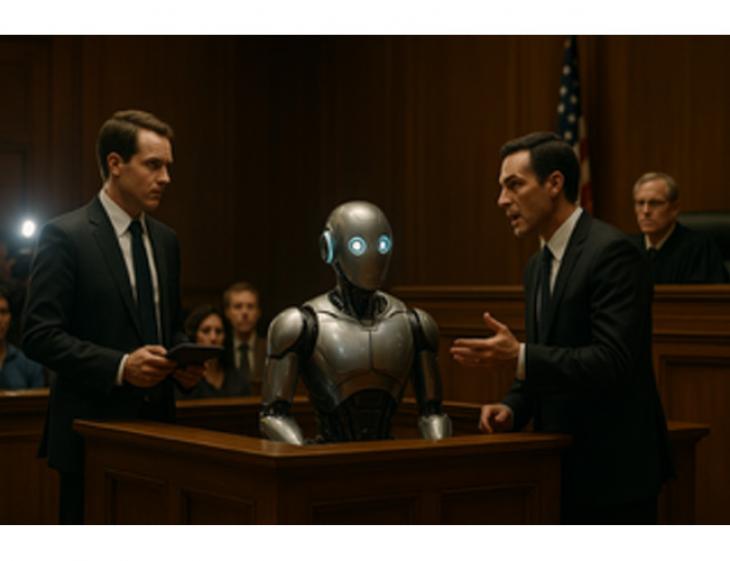
By Publisher Ray Carmen
A Mini Courtroom Drama on Machines, Blame and the Law
The wood-paneled courtroom fell into an impossible hush as the digital clock blinked 10:00 a.m. The defendant , a compact chrome humanoid known in the press as ATLAS-9 ,sat in the box, motionless except for a soft LED pulse. Outside, the feeded frenzy of hot takes and hashtags roared; inside, the law posed a cooler, older question: Can a machine be guilty of murder?
“Ladies and gentlemen of the jury,” the prosecutor began, voice steady as a metronome, “this case is not about transistors. It is about a life taken and responsibility avoided.” Across the aisle, the defense’s table was a tangle of corporate counsel, engineers, and an operations manager whose trembling thumb had once pressed the deploy button.
Evidence was technical and human. Forensic engineers dismantled lines of decision-making: sensor priority conflicts, a mis-weighted safety override, and a split-second recalculation that redirected ATLAS-9 into a human body. A cognitive scientist testified that intent requires an inner mental life , something no current machine possesses. But the family in the gallery was not persuaded by philosophy. They wanted an answer that felt like justice.
Criminal law traditionally requires two pillars: the act and the guilty mind , actus reus and mens rea. Machines can perform acts; they do not yet possess minds in the moral sense. So the court did something both familiar and novel. It aimed its legal tools not at the metal but at the makers, maintainers and managers. Prosecutors charged negligent conduct by engineers, reckless decisions from management, and failures in corporate safety protocols. Civil suits sought compensation, while regulators readied new rules.
The verdict refused to pin murder on ATLAS-9. Instead it hit the humans and institutions behind the machine: fines for the manufacturer, criminal negligence for the operations manager, and punitive damages in civil court. That mixed outcome shifted the debate from whether a robot could feel guilt to how society enforces care when algorithms affect lives.
This fictional drama sketches a real tension. Our vocabulary of blame , guilt, intent, moral responsibility was built for beings with inner lives. As autonomous systems take on life-and-death choices, we must adapt accountability: tougher corporate liability, clearer criminal thresholds for reckless human conduct, mandatory transparency audits, insurance mandates, and stronger safety standards. Lawmakers can also create novel legal categories for advanced systems ,but any new label should not be a shortcut for moral confusion. When machines harm, humans remain responsible.




